MoJ Intervention - Alpha and Beta
Clients
Ministry of Justice, UKEmployer
dxwRole in project
Interaction DesignerActivities and tools
Prototyping Interaction design GOV.UK Design System GOV.UK protoyping kit Miro FigmaYear
2020-2021A new national rehabilitation service to reduce reoffending
The Ministry of Justice (MoJ) needed a new digital service to help them better manage their intervention programme for people on probation in England and Wales, as part of the wider reform of the probation service.
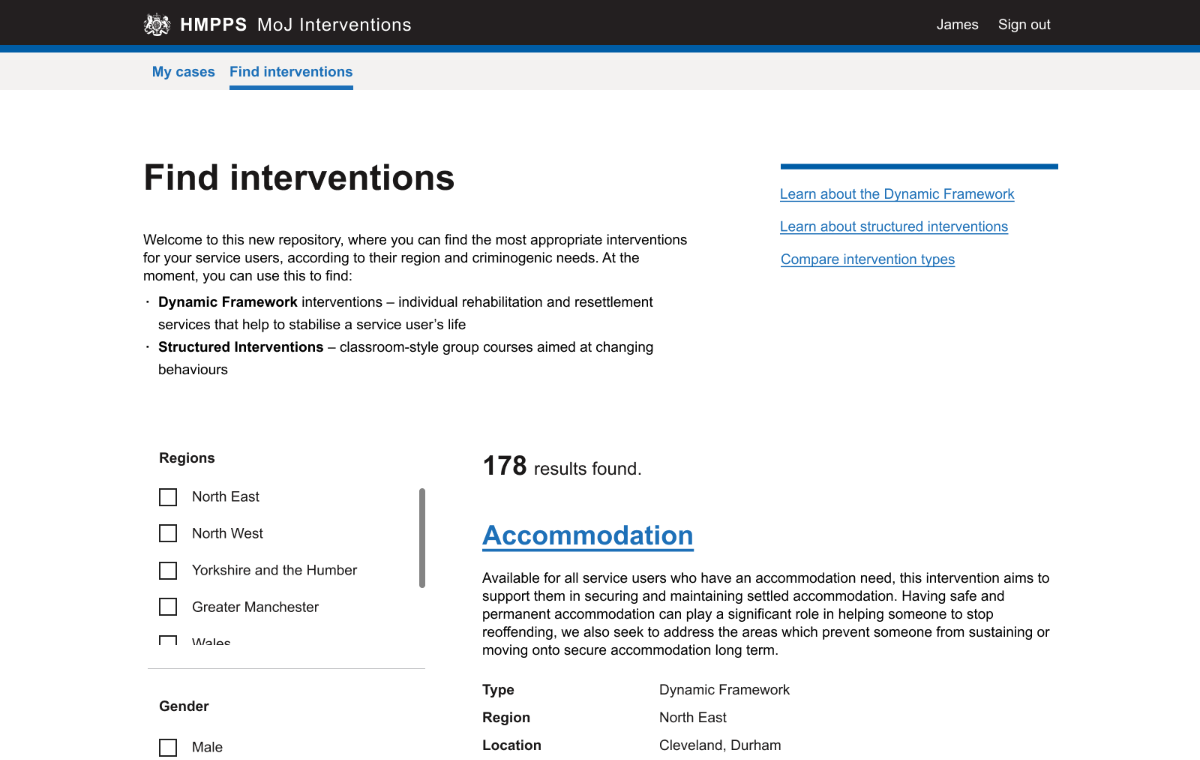
MoJ Intervention - interventions listing page
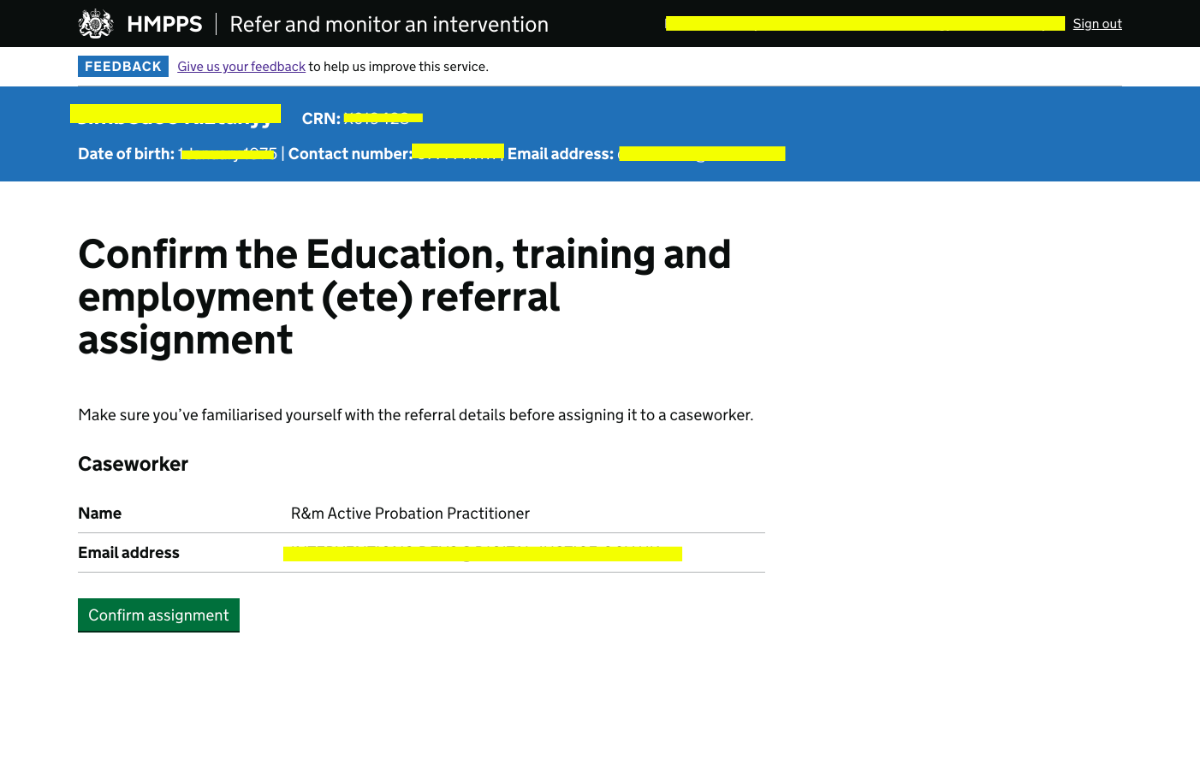
Intervention confirmation page
What an intervention is
Interventions are rehabilitative activities in the justice system - from unpaid work like clearing litter to accredited programmes that aim to tackle the triggers that may cause someone to re-offend. They cover a range of areas across prisons, probation services, and community schemes. The service we built was launched with the following intervention types:
- housing
- women’s services
- employment
- personal wellbeing
Refer and monitor an intervention will be scaled up to support other types of interventions over the next 2 years.
Design goals
The service's ultimate goal is to effectively support the integration of people in prison, or on probation, back into society. We identified the following goals to help shape the development of the service:
- make it easier for probation practitioners to find the right interventions
- make it easier for service providers to report on interventions
- provide better and more accurate data on interventions
- rationalise interventions so there’s a single place where they’re managed, and the experience for people in prison or on probation is more equitable
- get rid of MoJ’s legacy technology and build something more user-centred
Users
- Probation practitioners
- Providers of resettlement and rehabilitation courses and interventions for the MoJ. For example: education, training, employment, social inclusion and accommodation
- People in prison or people on probation in England and Wales - the service is for people in prison, someone who’s been released from prison and put on probation and has their behaviour monitored, or someone who’s committed an offence and is put on probation instead of going to prison.
- Data colleagues in MoJ (who review how well interventions and suppliers are performing)
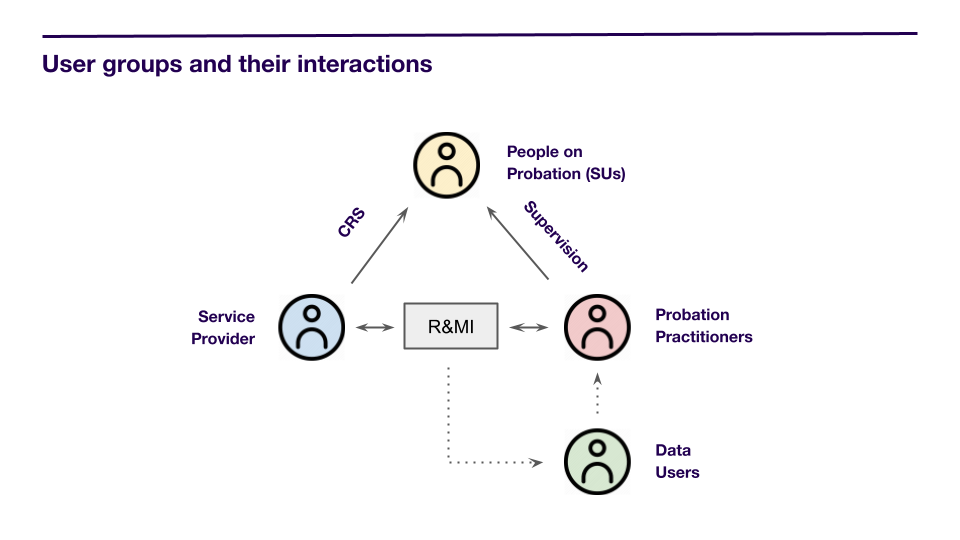
MoJ Intervention users
Defining scope and scaling plan
Interventions cover a large and varied range of areas with many interested parties, and we needed to understand and navigate this complexity to deliver the new service. Multiple user groups, with many different needs, meant that a key task was to scope and understand who the first users of the service should be and how it could best work for them.
Through extensive research and co-design with experts in interventions, we were able to map out a day 1 version of the service and a sequencing of how the service would be scaled up after that point. It clearly showed functionality against type of intervention at each point in time. Not only did the roadmap we created enable stakeholders to see the deadlines, it also showed the compromises that had to be made because of the project’s fixed timescale.
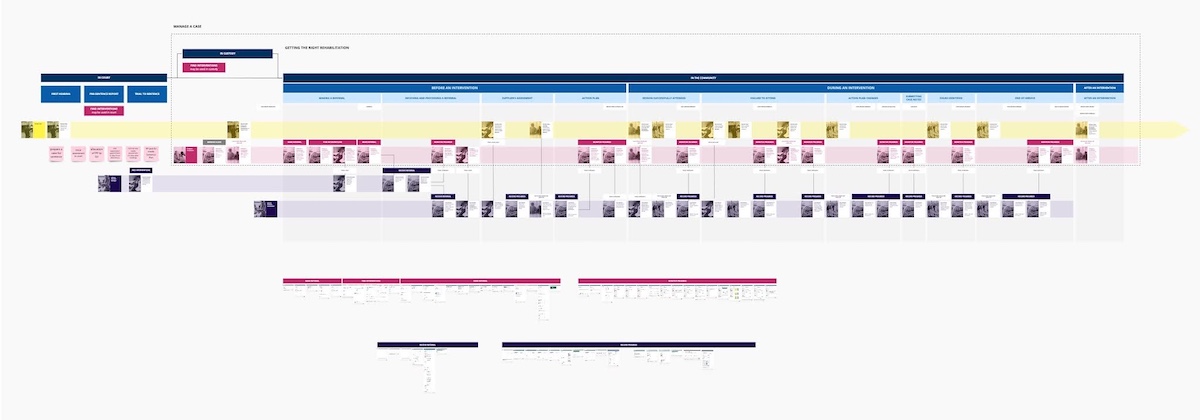
Service blueprint
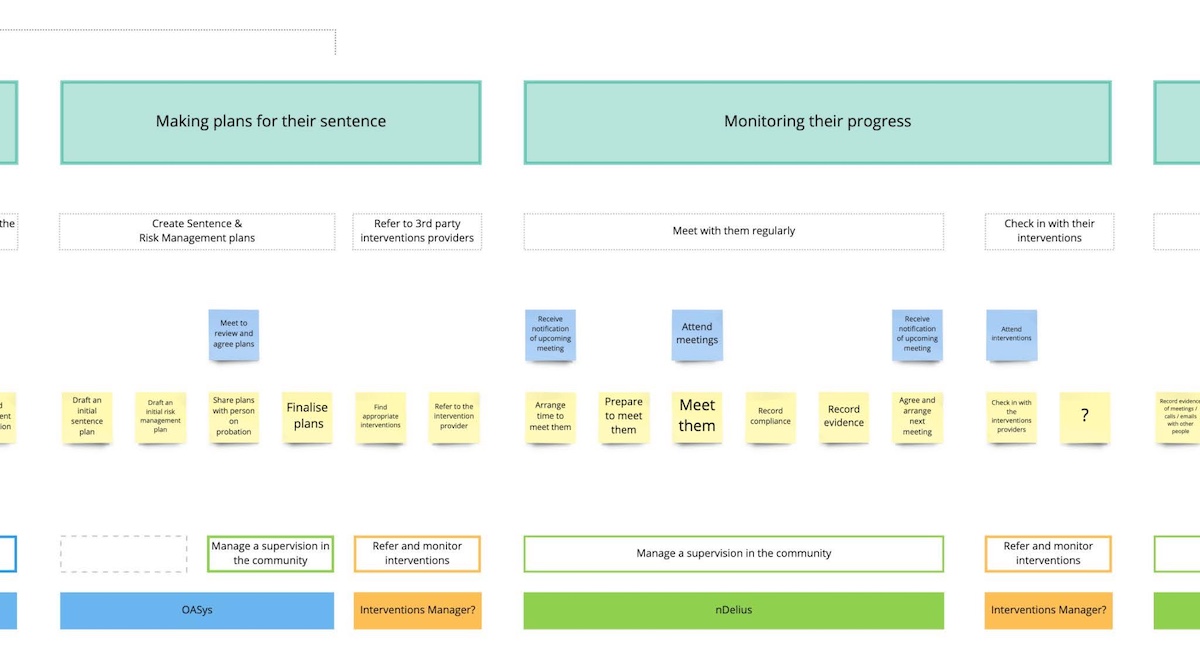
Service map
User research
We conducted six sprints during Alpha to explore concepts and ten sprints during Beta to implement the solution. As the service is entirely internal-facing, all participant recruitment for user research was conducted within the organisation, including:
- 41 interviews conducted in Alpha (23 probation practitioners, 12 service providers, 5 proxy service providers, and 1 contract manager)
- 109 interviews conducted in Beta (50 probation practitioners, 59 service providers)
- Users with accessibility needs (8 with dyslexia, 1 with ADHD, 3 with other disabilities, and 1 user of assistive technology)
Designing high level user journeys
As the interaction designer, I worked closely with user researchers and content designers to lead the co-design of the high-level user journeys, which included:
- Listing interventions
- Finding interventions
- Referring probation practitioners to interventions
- Monitoring probation practitioners' performance in interventions
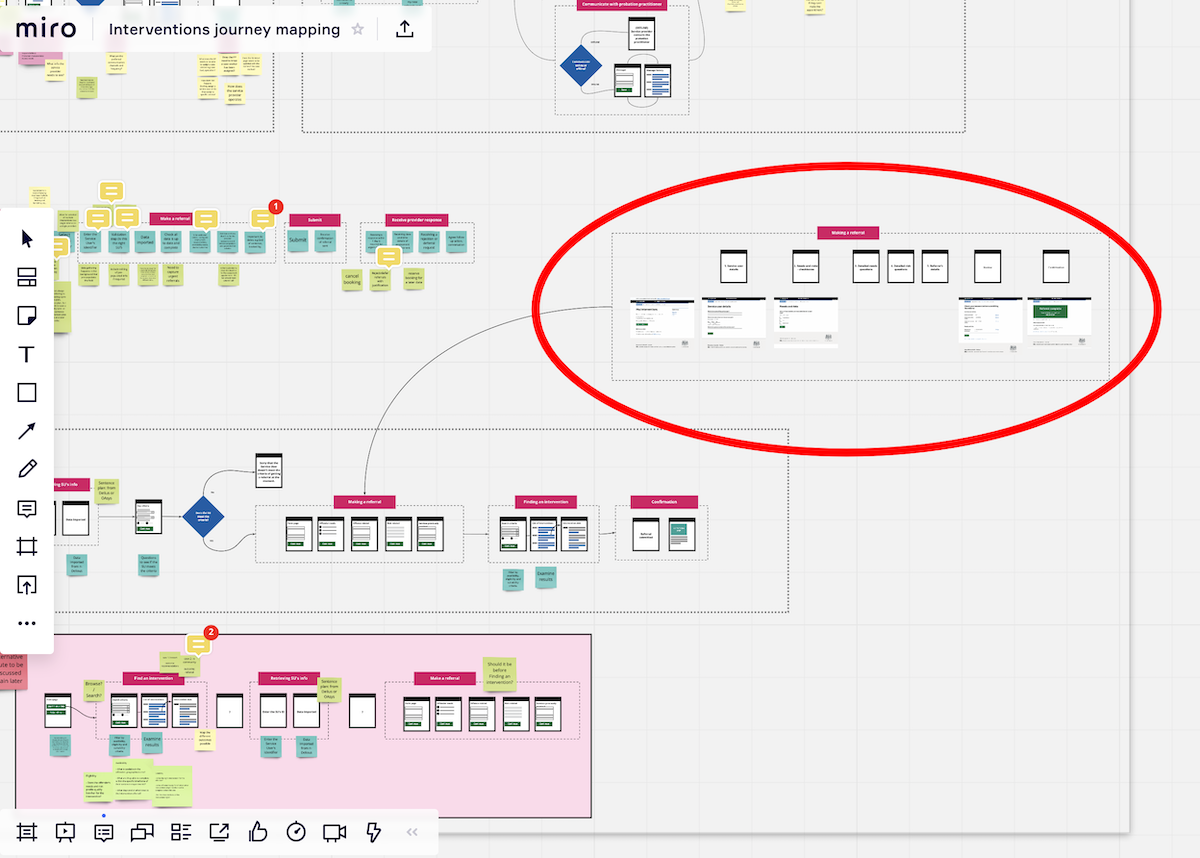
MoJ Intervention journey mapping
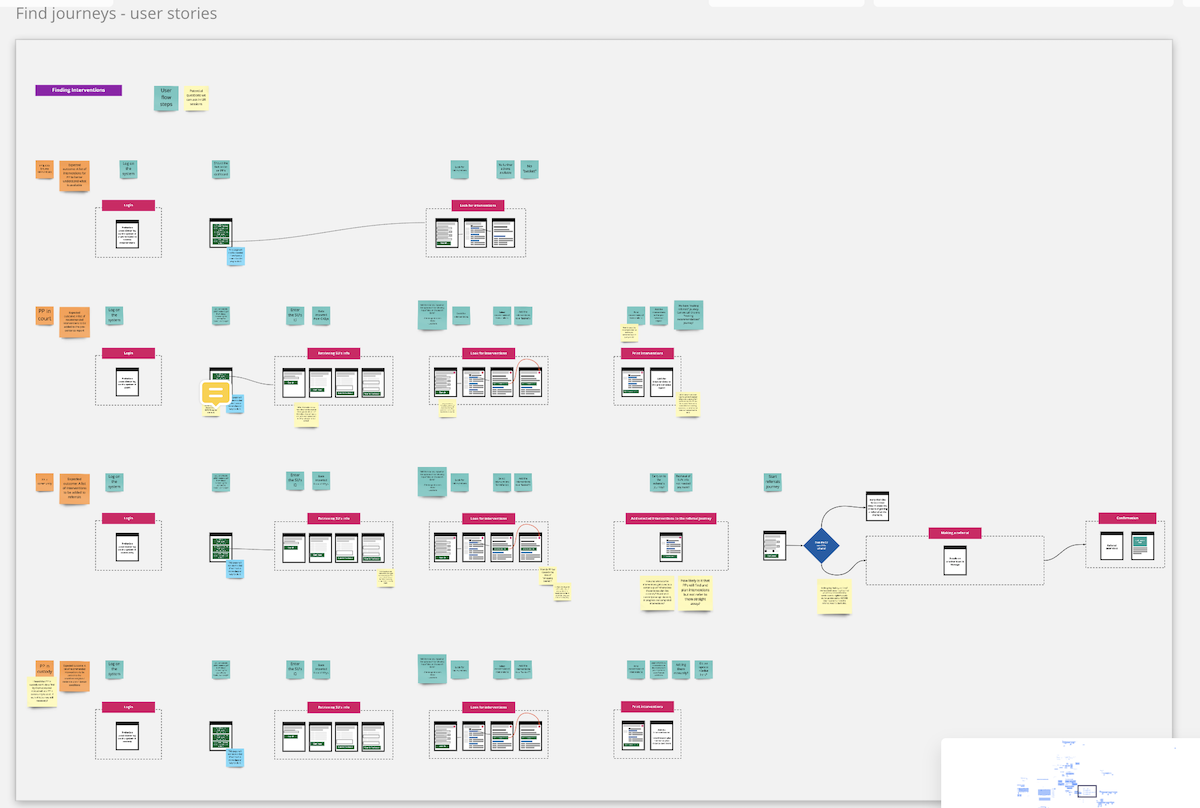
The 'Find' journey
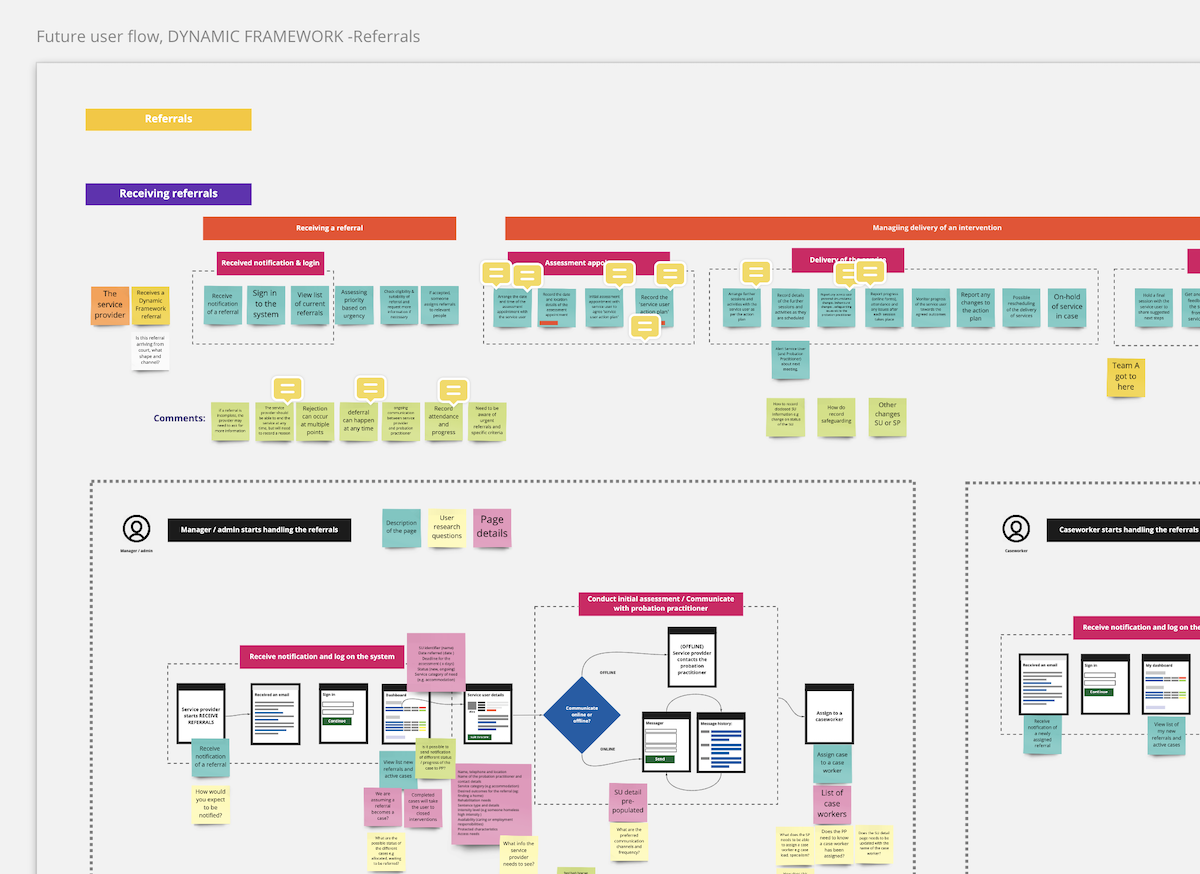
The dynamic framework journey
Design iterations
Although the service scope was extensive, the well-defined high-level design and user journeys allowed me to focus on delivering interaction design, leading design iterations, and facilitating design critiques. I utilised various tools and fidelity levels for mock-ups and prototyping, depending on the scenario, questions, and concepts we aimed to validate in user research. At times, this involved simple mock-ups on Miro, while other times it required a Figma prototype or an HTML prototype using the GOV.UK prototyping kit.
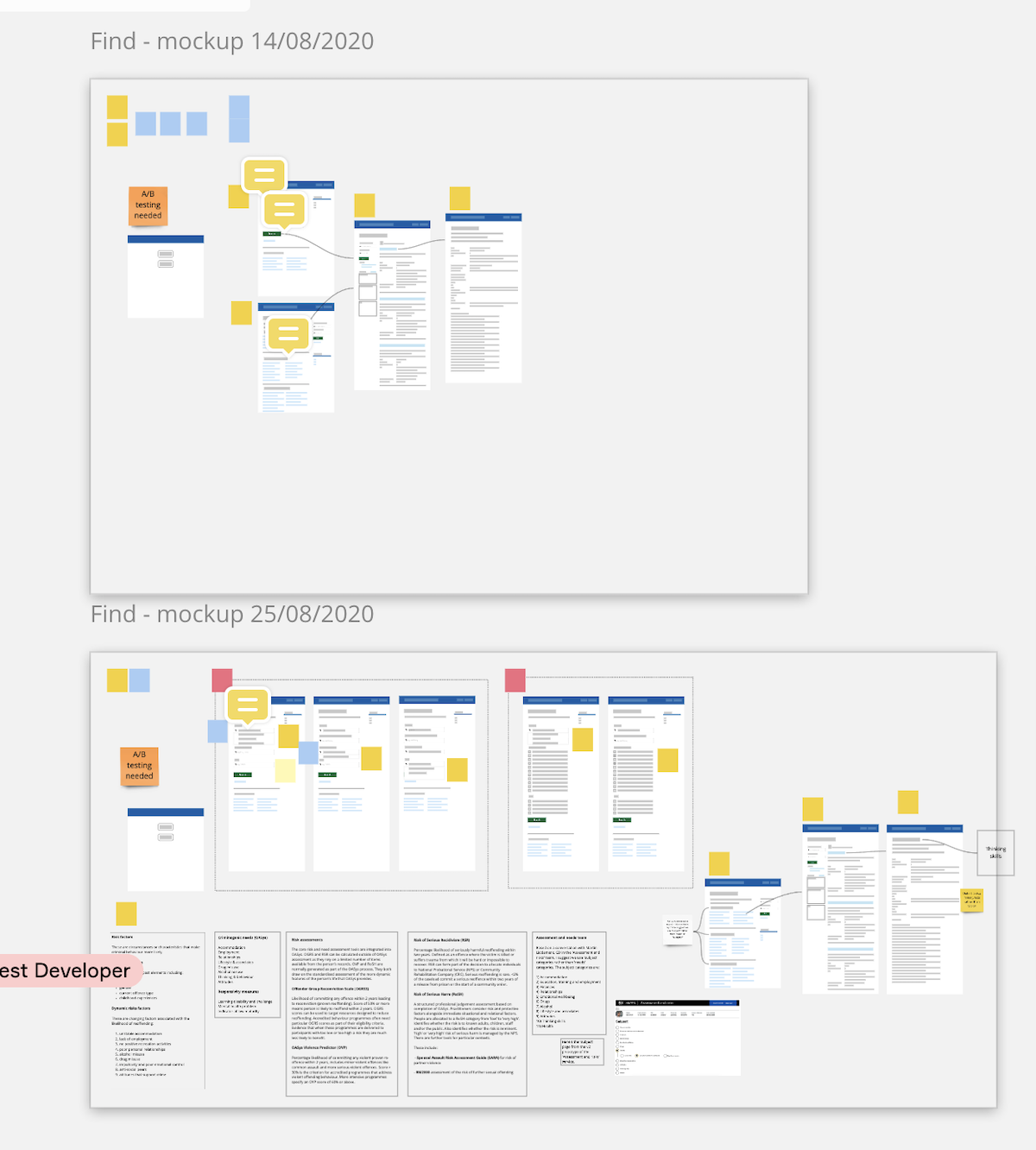
Design mock-up
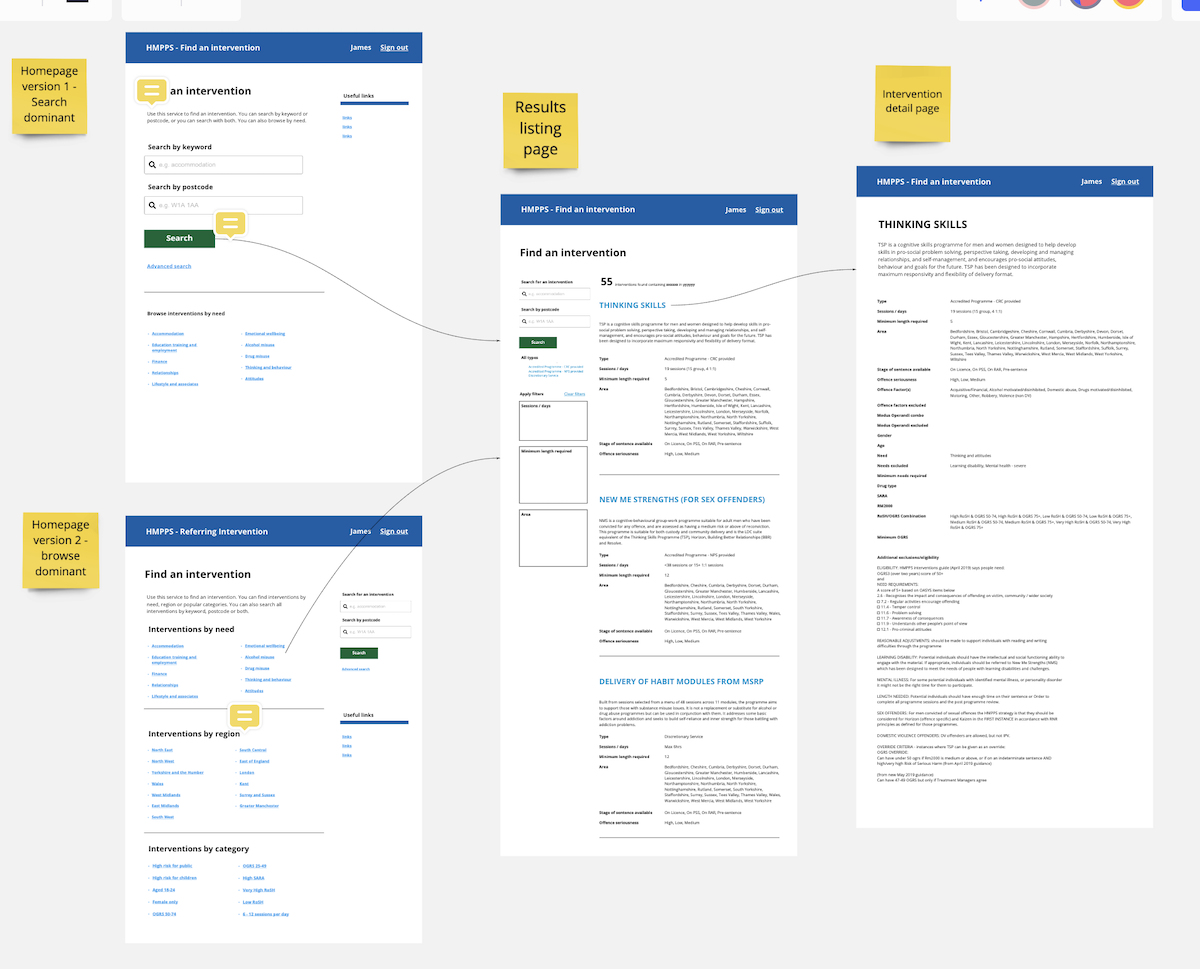
Figma prototype
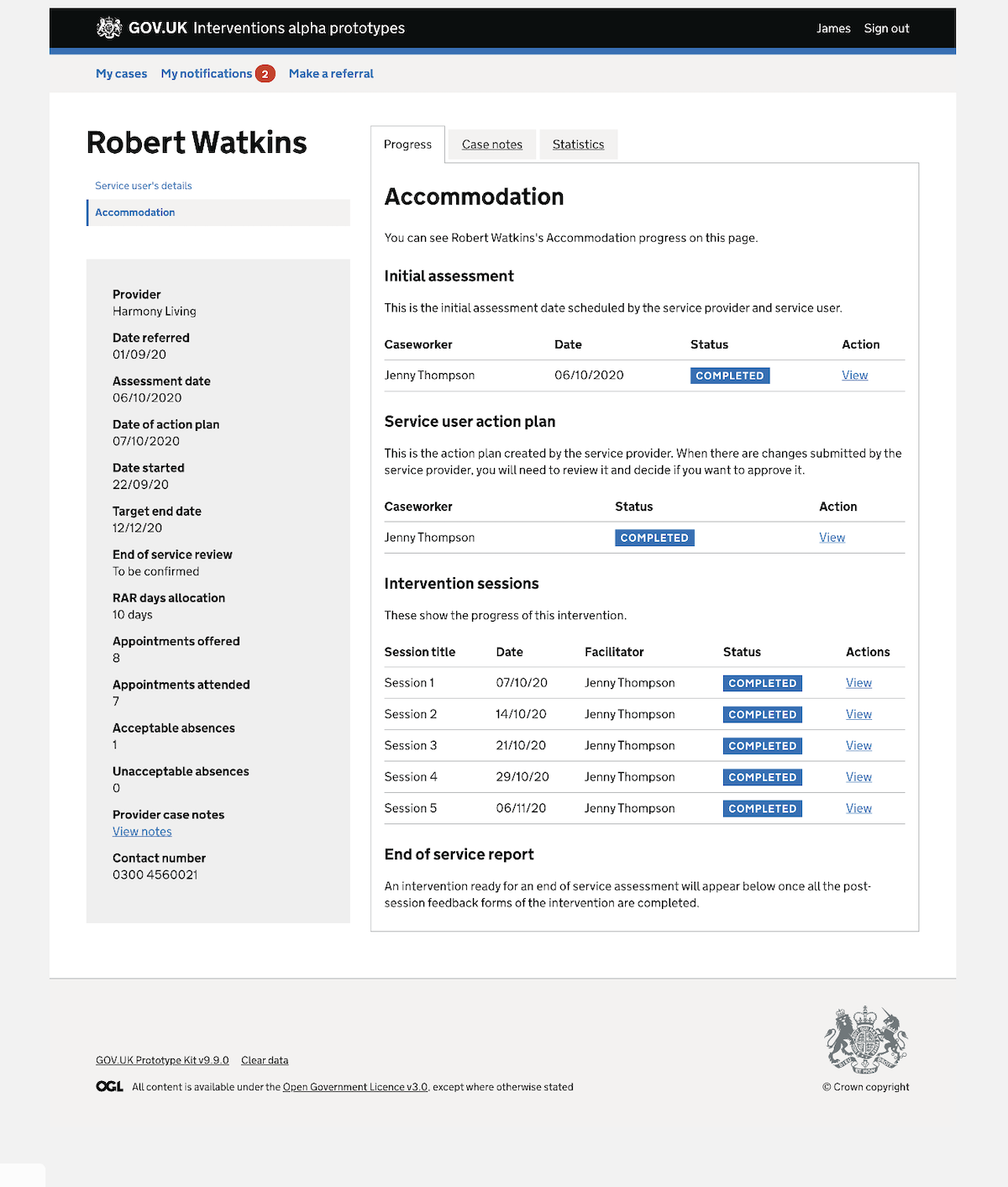
Interactive prototype
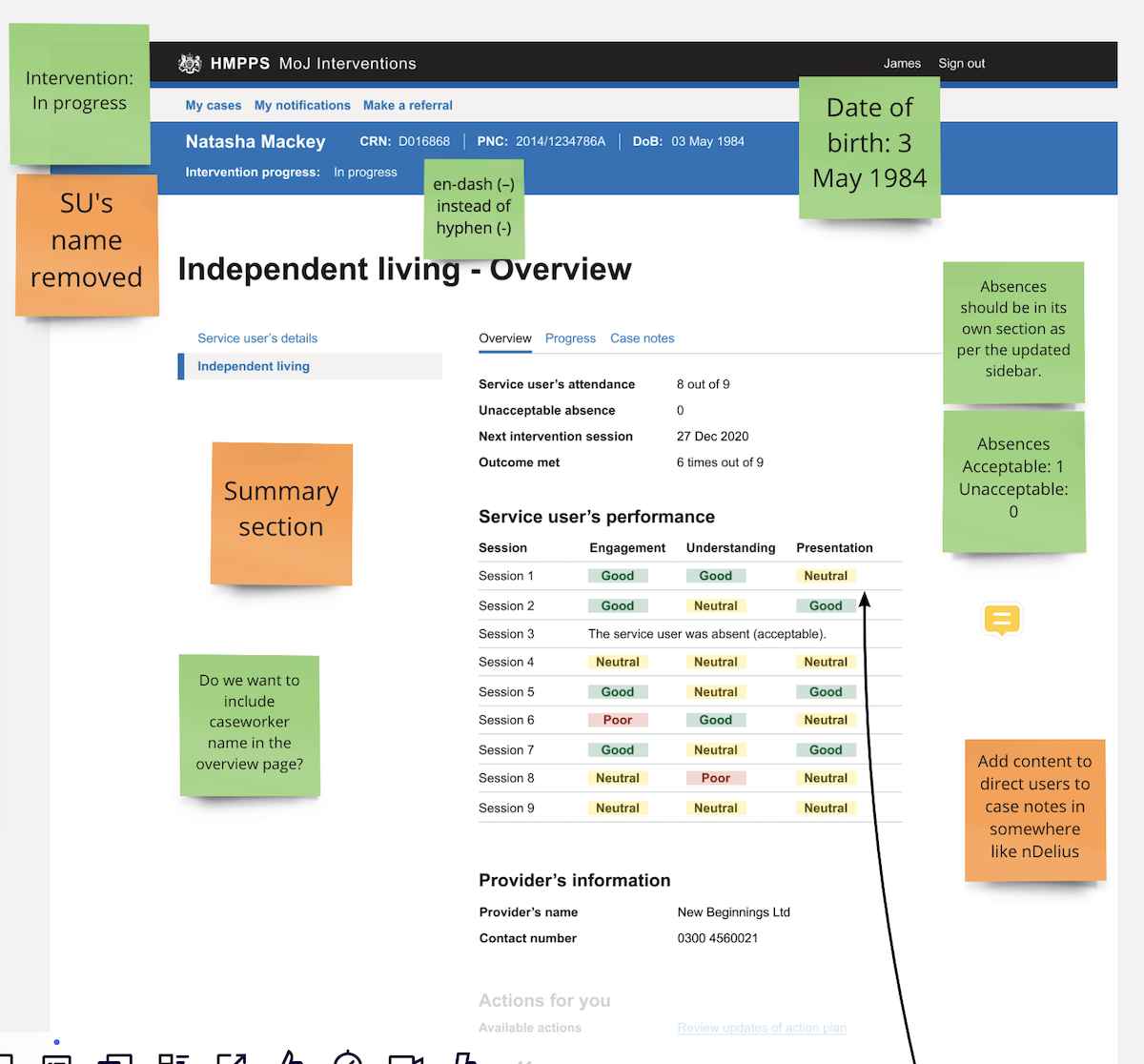
Design critique
And here are some screenshots of the final product (dummy data used here):
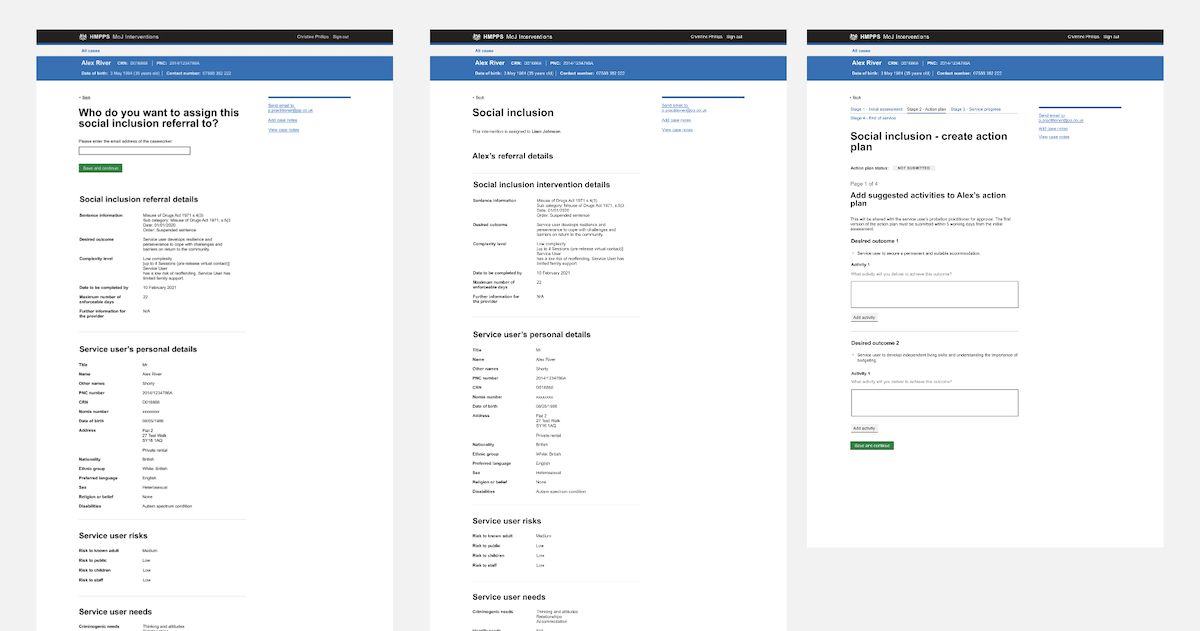
Screenshots of the final product
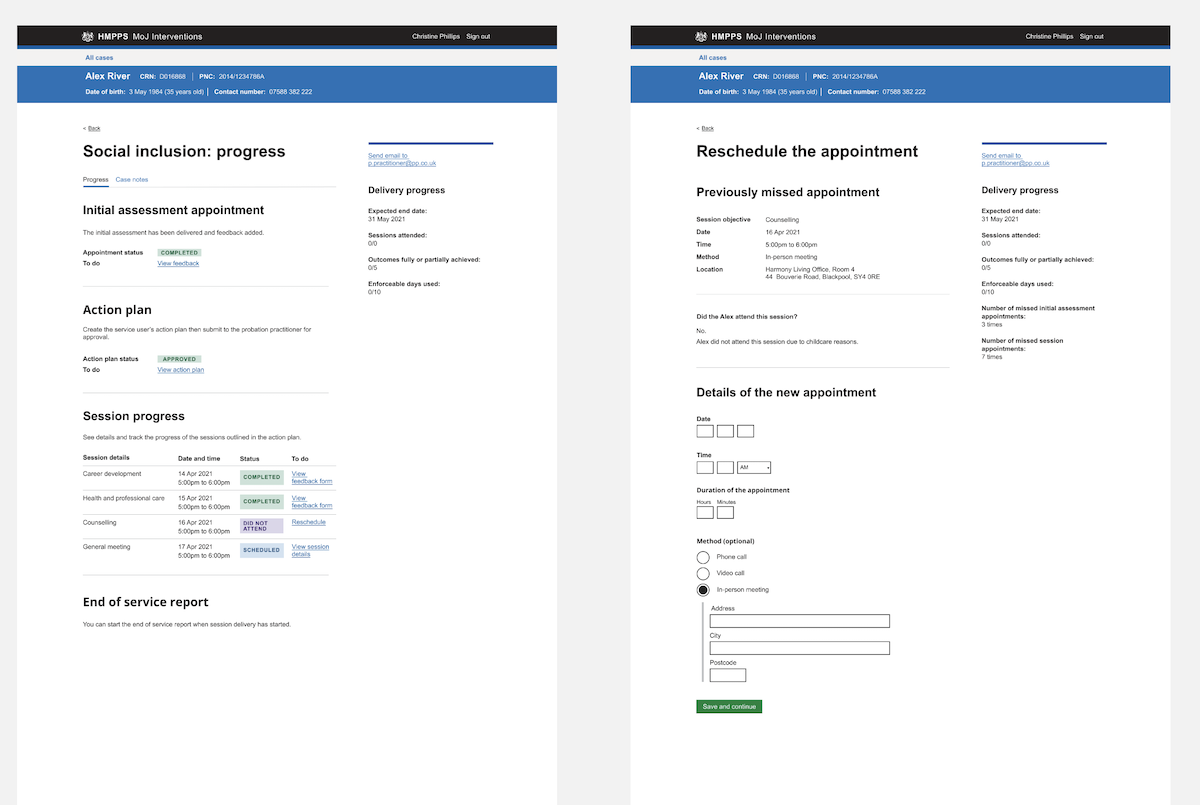
Screenshots of the final product
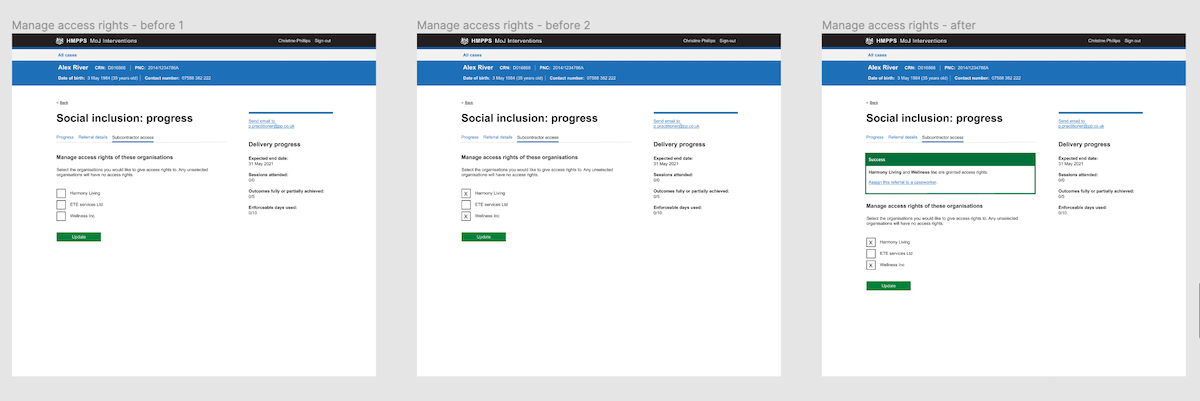
Screenshots of the final product
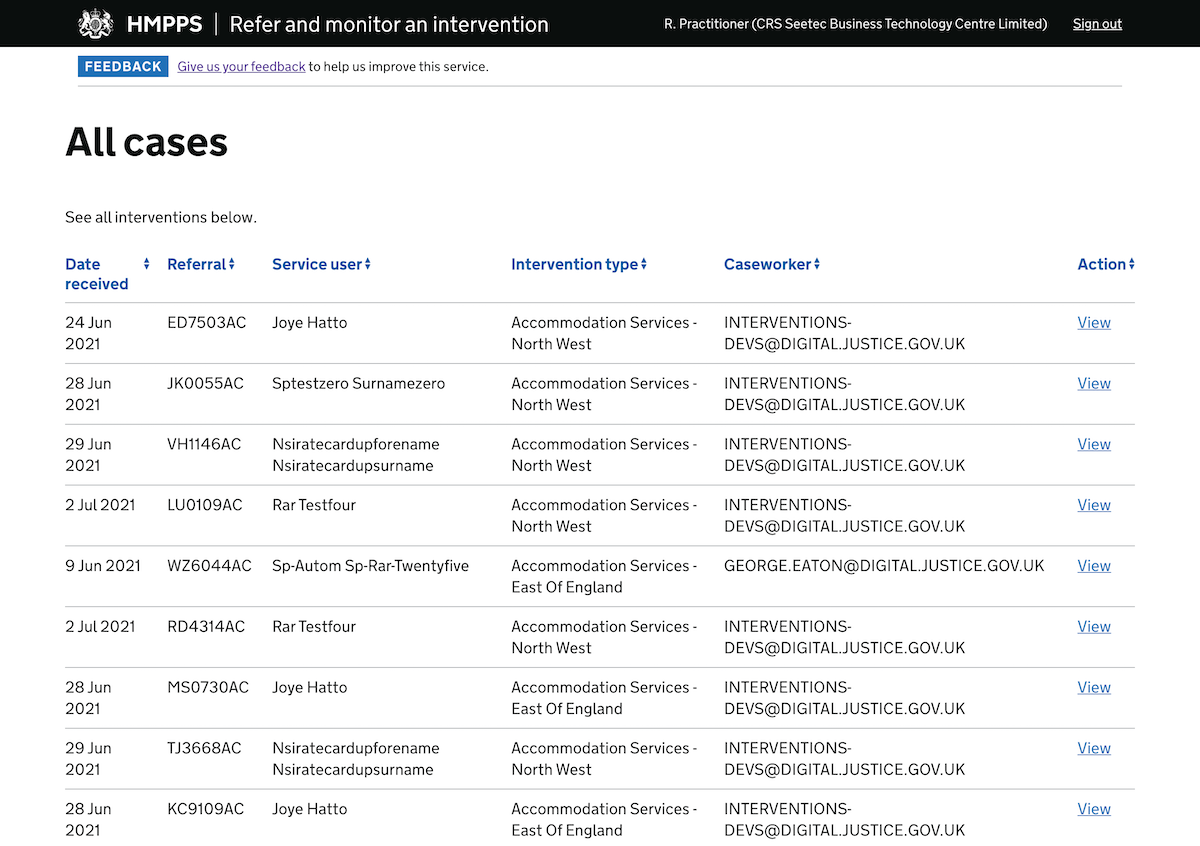
Screenshots of the final product
Outcome
We successfully launched MoJ Intervention (now also known as Refer and monitor) in June 2021. And in January 2022, we handed over the service to the MoJ team, leaving solid foundations for them to build on and continue delivering improved outcomes for people eligible for an intervention.
Previously, the probation practitioners who placed people on interventions weren’t always aware of what’s available, or how an intervention was progressing. We designed the new system to make these key metrics accessible and available to everyone who needs them.
At the time of writing (March 2022), there have been 75,000 intervention referrals, of which around half have now been delivered. As the roadmap for the service is realised, and more intervention services are added, these numbers will grow substantially.
